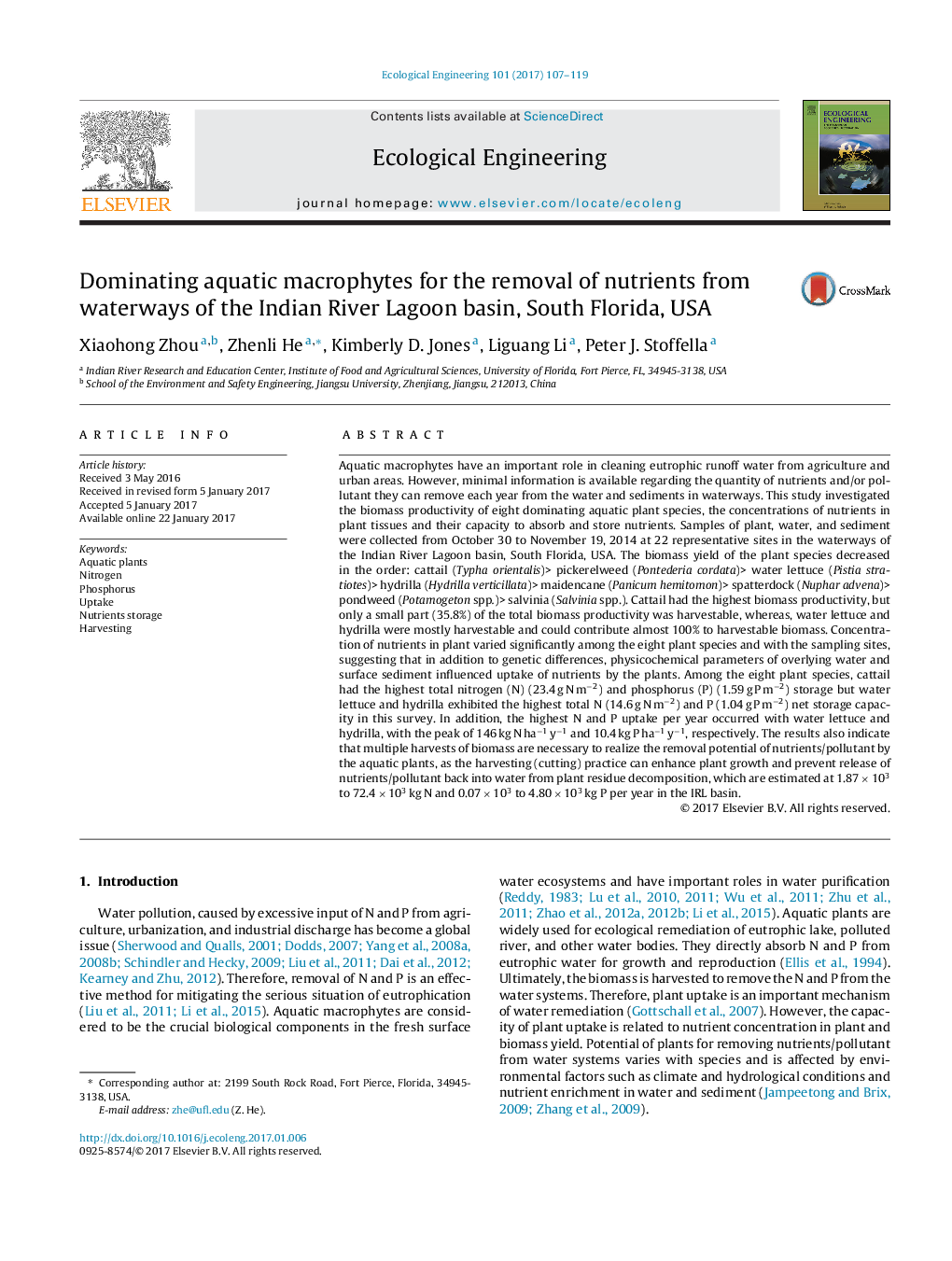| کد مقاله | کد نشریه | سال انتشار | مقاله انگلیسی | نسخه تمام متن |
|---|---|---|---|---|
| 5743919 | 1617998 | 2017 | 13 صفحه PDF | دانلود رایگان |
- Biomass productivity of dominating aquatic plants varied with species.
- Cattail had the highest total N and P storage.
- Water lettuce and hydrilla exhibited the highest total N, P net storage capacity.
- Biomass yield is important for nutrient removal.
- Multiple harvests can enhance N, P removal by the aquatic plants.
Aquatic macrophytes have an important role in cleaning eutrophic runoff water from agriculture and urban areas. However, minimal information is available regarding the quantity of nutrients and/or pollutant they can remove each year from the water and sediments in waterways. This study investigated the biomass productivity of eight dominating aquatic plant species, the concentrations of nutrients in plant tissues and their capacity to absorb and store nutrients. Samples of plant, water, and sediment were collected from October 30 to November 19, 2014 at 22 representative sites in the waterways of the Indian River Lagoon basin, South Florida, USA. The biomass yield of the plant species decreased in the order: cattail (Typha orientalis)> pickerelweed (Pontederia cordata)> water lettuce (Pistia stratiotes)> hydrilla (Hydrilla verticillata)> maidencane (Panicum hemitomon)> spatterdock (Nuphar advena)> pondweed (Potamogeton spp.)> salvinia (Salvinia spp.). Cattail had the highest biomass productivity, but only a small part (35.8%) of the total biomass productivity was harvestable, whereas, water lettuce and hydrilla were mostly harvestable and could contribute almost 100% to harvestable biomass. Concentration of nutrients in plant varied significantly among the eight plant species and with the sampling sites, suggesting that in addition to genetic differences, physicochemical parameters of overlying water and surface sediment influenced uptake of nutrients by the plants. Among the eight plant species, cattail had the highest total nitrogen (N) (23.4 g N mâ2) and phosphorus (P) (1.59 g P mâ2) storage but water lettuce and hydrilla exhibited the highest total N (14.6 g N mâ2) and P (1.04 g P mâ2) net storage capacity in this survey. In addition, the highest N and P uptake per year occurred with water lettuce and hydrilla, with the peak of 146 kg N haâ1 yâ1 and 10.4 kg P haâ1 yâ1, respectively. The results also indicate that multiple harvests of biomass are necessary to realize the removal potential of nutrients/pollutant by the aquatic plants, as the harvesting (cutting) practice can enhance plant growth and prevent release of nutrients/pollutant back into water from plant residue decomposition, which are estimated at 1.87 Ã 103 to 72.4 Ã 103 kg N and 0.07 Ã 103 to 4.80 Ã 103 kg P per year in the IRL basin.
Journal: Ecological Engineering - Volume 101, April 2017, Pages 107-119
